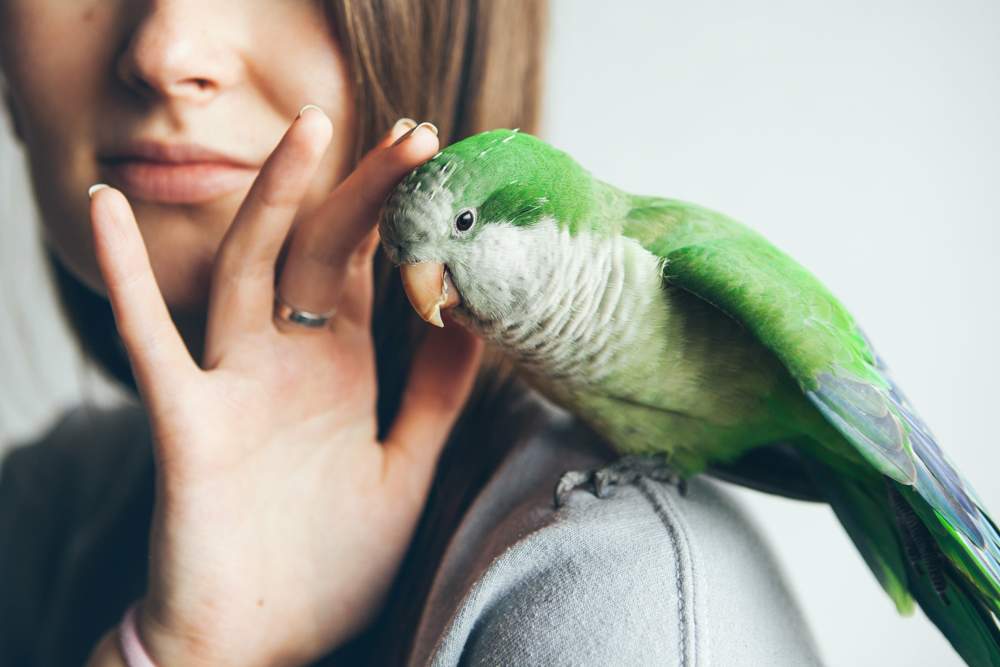
When it comes to traveling with pets, the experience, safety measures, and guidelines are different for each species as well as every individual animal. Some might become stressed while others love going for car rides or even longer journeys. Contrary to popular belief, birds can be great travel companions if you prepare them well. So if you have a pet bird and often worry about leaving them home alone, these tips will help you both enjoy a hassle-free trip.
A great way to start is to introduce your bird to travel with short outings. This will help you determine any possible problems or issues while you’re still close to home. Take them to the local market with you, visit a friend together or take a walk with them. Increase the time away from home slowly to give your bird a chance to adapt to the new sights, sounds, and experiences they’ll encounter.
Short Trips
1. When visiting a friend or relative, inform them in advance that you will be bringing your bird along so they’re prepared for it.
2. Make sure your bird is always safe inside a carrier or a birdcage while traveling. You may also wish to harness train your bird to allow him or her a chance to stretch their legs (and wings) while still keeping them under control.
3. Do not place your bird’s cage in a corner or out of sight when traveling by car. Make sure they can see you and hear you talk. This will reassure them that you’re nearby.
4. Avoid traveling with your bird if the weather is extreme (windy, snowing, etc.). Obviously, you can’t always avoid bad weather, but when possible, it’s a good idea.
5. Carry some bird snacks like fresh fruit, grains, seeds, nuts, berries, or a bit of bird food packed in an airtight jar.
6. Carry a small bottle of water from home for your bird.
7. When traveling by car don’t leave your bird unattended, even for short periods of time. Birds have a very low tolerance for heat; leaving them in high heat areas can be fatal.
8. Keep your bird’s flight feathers well-trimmed to avoid any escape attempts.
9. Consider using a bird flight suit when out and about, to cut down on messes.
10. Cover the cage partially to help prevent motion sickness. Leave enough of an opening so that the bird can see you, and so you can see him or her.
11. Never put your bird’s cage on the front seat of your car in case an airbag inflates. It can cause severe injury.
Longer Trips
1. As you make your reservations, be sure to clearly communicate that you’re arriving with a pet bird. When staying in hotels, ask for pet-friendly rooms in a non-smoking area.
2. Take your bird to the vet for a complete health exam before long air/car trips. Seek your veterinarian’s advice on how to handle an emergency situation, stressors, or allergies.
3. Think about how much time you will have for your bird. If you know you won’t have time to feed, clean their cage or play with them, you may want to rethink bringing him or her along. Consider leaving them at a friend’s place, or think about investing in a pet-sitter (make sure they have experience handling your species of bird, of course).
4. It might not be possible to carry enough potable water for your bird when you’re going for a longer trip. This is particularly problematic when flying, given current airline restrictions. If you can, get your bird used to bottled water, preferably an easy-to-find brand. A portable pet water dispenser may also be a good investment as it’s easy to carry and mimics a standard bird waterer.
5. Pack ample food for your bird in an unbreakable, airtight jar so the food doesn’t get moist or stale. Throw in some toys and snacks to make the trip a little easier and more enjoyable. Be sure to stick to their regular diet and pack enough so you don’t have to go pet food shopping when you’re on vacation.
6. If it’s going to be a short trip for a couple of days out of town, your bird should be able to adjust well to a small carrier. On the other hand, if it’s going to be more than a few days away from home, you should consider purchasing a larger, collapsible travel cage.
7. Don’t forget to keep basic cage cleaning supplies like cage liners, natural or herbal disinfectants, cleaning cloths, scrub brushes, and paper towels on hand as well.
8. If you’re traveling by air, it’s a good idea to speak to the airline and find out their regulations for flying with birds before you arrive at the airport. Ask them if they allow birds to travel in the cabin, if there are size restrictions on carriers or if there are any extra fees. Getting this information well in advance will save you time, money, and stress.
9. When you’re traveling to another state or country, find out if your species of bird is legally welcome there. Ask if there is a quarantine process for traveling pets, and if so, how long. Getting a health certificate from your bird’s vet, especially before international travel, can be a lifesaver.
10. Make sure your bird is wearing an ID tag at all times.
11. Have a small first aid kit ready for use if required. Do adequate research for good veterinary care at your destination in case you have any concerns or emergencies.
Consider your destination carefully. Is it safe for birds? Will it be overcrowded or dark? Is there something that can overwhelm your pet? Your destination should be as safe and enjoyable for your bird as it is for you. Prepare yourself and your bird beforehand for a fun and stress-free trip that you can enjoy together.

